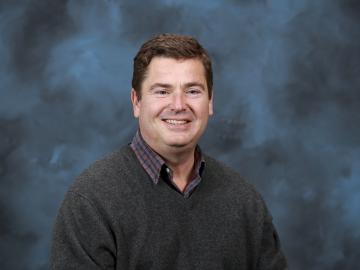Filter News
Area of Research
- (-) Biology and Soft Matter (5)
- (-) Computational Chemistry (5)
- (-) Nuclear Systems Modeling, Simulation and Validation (3)
- Advanced Manufacturing (34)
- Biological Systems (18)
- Biology and Environment (177)
- Building Technologies (12)
- Chemical and Engineering Materials (4)
- Chemistry and Physics at Interfaces (11)
- Clean Energy (522)
- Climate and Environmental Systems (14)
- Computational Biology (6)
- Computational Engineering (5)
- Computer Science (19)
- Data (1)
- Earth Sciences (1)
- Electricity and Smart Grid (3)
- Energy Frontier Research Centers (14)
- Energy Sciences (5)
- Fossil Energy (3)
- Fuel Cycle Science and Technology (3)
- Functional Materials for Energy (16)
- Fusion and Fission (54)
- Fusion Energy (17)
- Geographic Information Science and Technology (3)
- Isotope Development and Production (3)
- Isotopes (35)
- Materials (433)
- Materials Characterization (2)
- Materials for Computing (36)
- Materials Synthesis from Atoms to Systems (13)
- Materials Under Extremes (12)
- Mathematics (1)
- National Security (79)
- Neutron Data Analysis and Visualization (4)
- Neutron Science (190)
- Nuclear Science and Technology (74)
- Nuclear Systems Technology (1)
- Quantum Condensed Matter (4)
- Quantum information Science (9)
- Reactor Technology (1)
- Renewable Energy (4)
- Sensors and Controls (5)
- Supercomputing (311)
- Transportation Systems (11)
News Type
Media Contacts

ORNL biogeochemist Elizabeth Herndon is working with colleagues to investigate a piece of the puzzle that has received little attention thus far: the role of manganese in the carbon cycle.

Researchers at Oak Ridge National Laboratory are developing a first-of-a-kind toolkit drawing on video game development software to visualize radiation data.

Nuclear scientists at Oak Ridge National Laboratory have established a Nuclear Quality Assurance-1 program for a software product designed to simulate today’s commercial nuclear reactors – removing a significant barrier for industry adoption of the technology.

The Consortium for Advanced Simulation of Light Water Reactors at the Department of Energy’s Oak Ridge National Laboratory has named David J. Kropaczek its director.

Plants and other biomass can be converted into a variety of renewable high-value products including carbon fibers, plastics, and liquid fuels such as ethanol and biodiesel that are beneficial for reducing petroleum use and vehicle emissions. Breaking down plants in order to release...

Scientists at the US Department of Energy’s Oak Ridge National Laboratory are learning how the properties of water molecules on the surface of metal oxides can be used to better control these minerals and use them to make products such as more efficient semiconductors for organic light emitting diodes and solar cells, safer vehicle glass in fog and frost, and more environmentally friendly chemical sensors for industrial applications.

Throw a rock through a window made of silica glass, and the brittle, insulating oxide pane shatters. But whack a golf ball with a club made of metallic glass—a resilient conductor that looks like metal—and the glass not only stays intact but also may drive the ball farther than conventional clubs. In light of this contrast, the nature of glass seems anything but clear.

Complex oxides have long tantalized the materials science community for their promise in next-generation energy and information technologies. Complex oxide crystals combine oxygen atoms with assorted metals to produce unusual and very desirable properties.

Neutron scattering research at the Department of Energy’s Oak Ridge National Laboratory has revealed clear structural differences in the normal and pathological forms of a protein involved in Huntington’s disease.

The Spallation Neutron Source at the Department of Energy’s Oak Ridge National Laboratory broke records for sustained beam power level as well as for integrated energy and target lifetime in the month of June.




